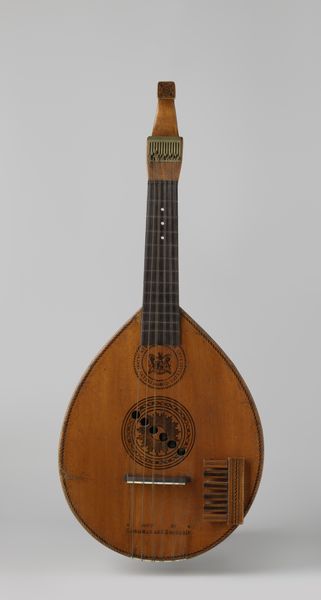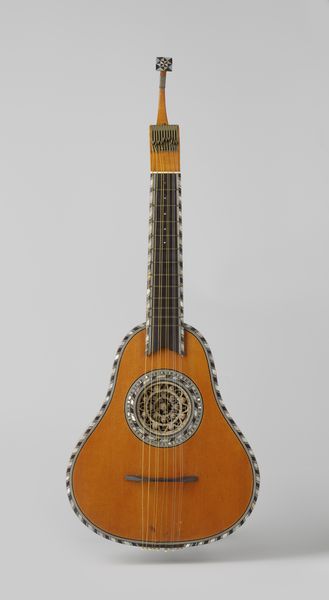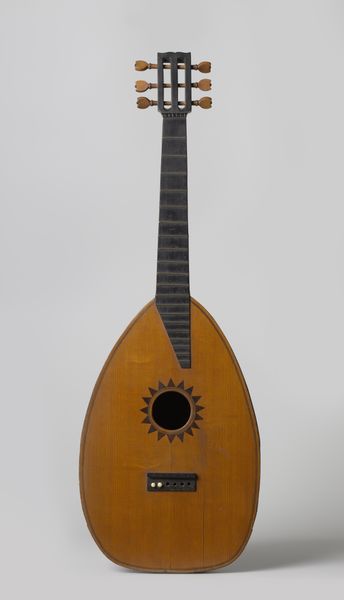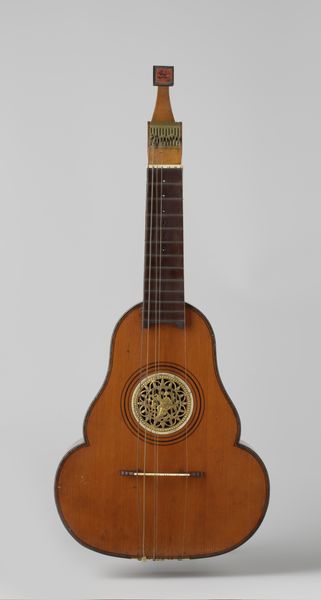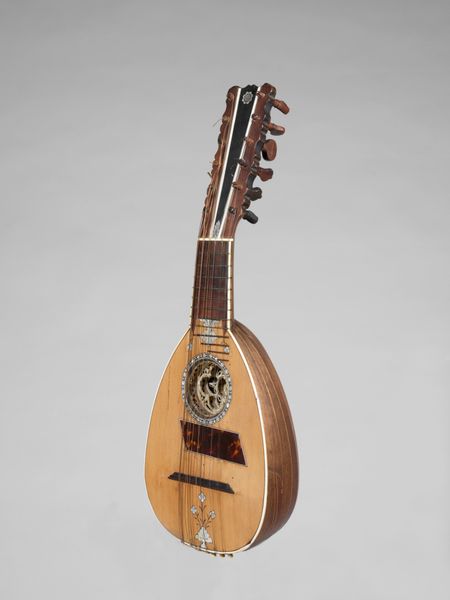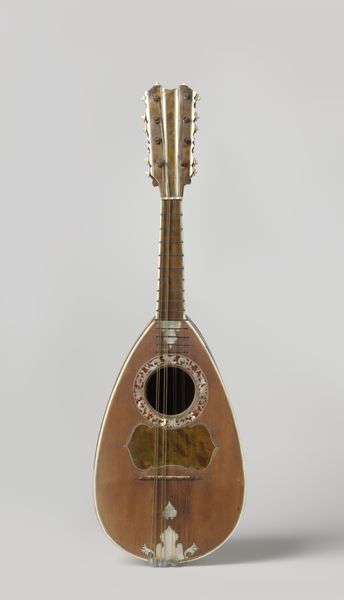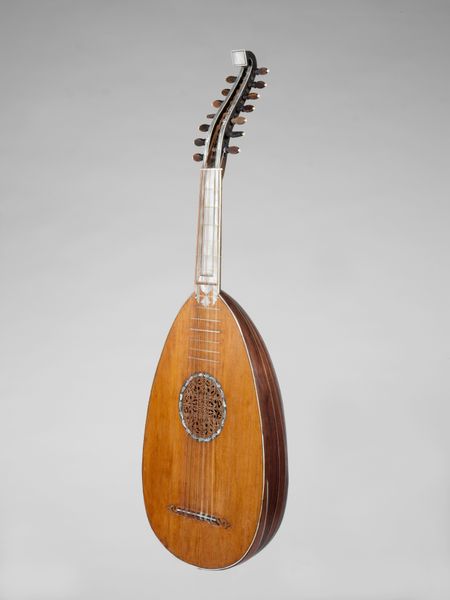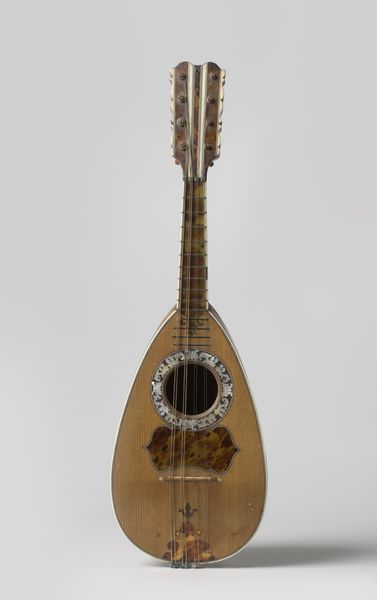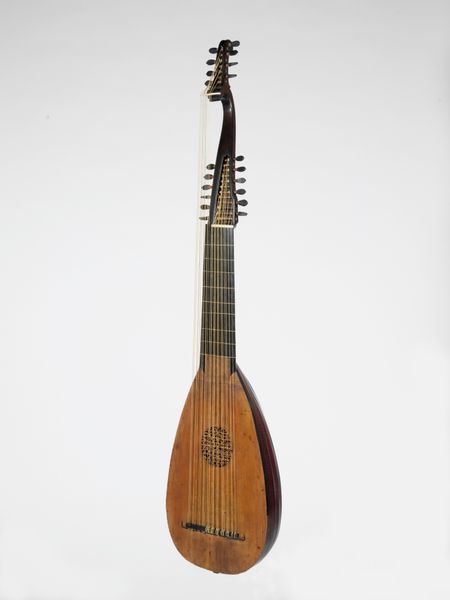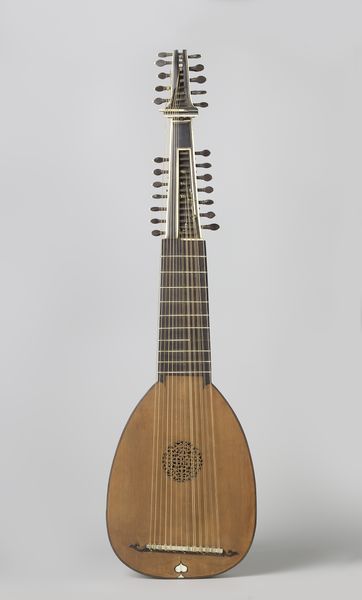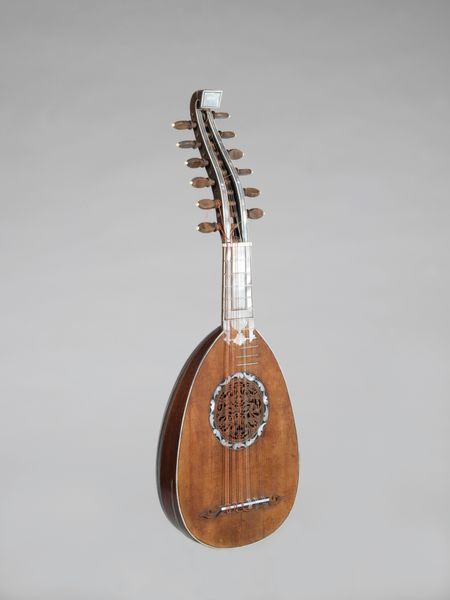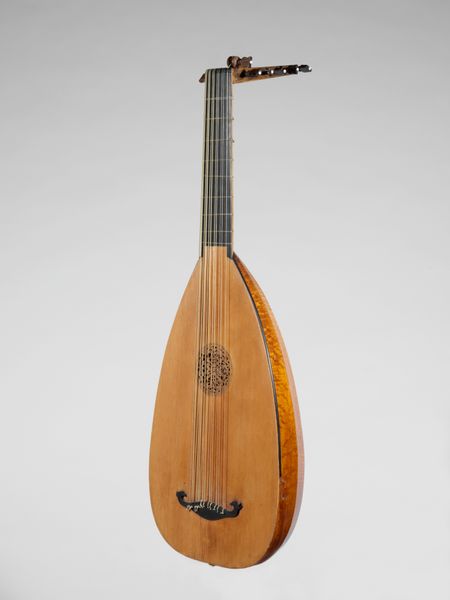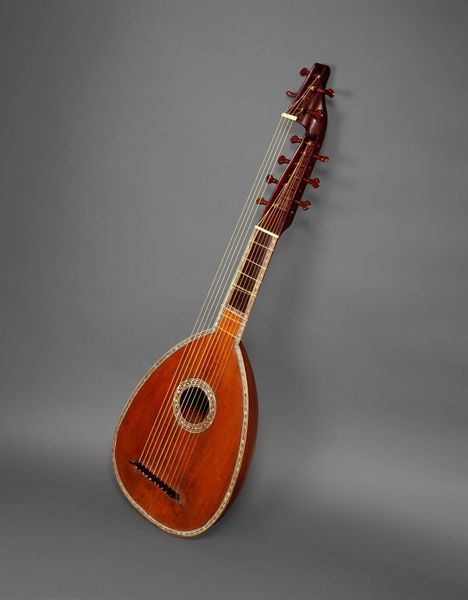
English Guitar, John and Gerard Vogler (active 1777-1785), London, c. 1780, spruce, maple, ebony, metal, ivory, mother-of-pearl, tortoise shell c. 1780
0:00
0:00
metal, wood, ivory
#
metal
#
wood
#
ivory
Dimensions: length 71 cm, width 30.5 cm, depth 10 cm
Copyright: Rijks Museum: Open Domain
Crafted around 1780 in London by John and Gerard Vogler, this English Guitar is an amalgamation of spruce, maple, ebony, and more. The rosette inlaid with mother-of-pearl around the sound hole draws our eye. These intricate patterns are a motif that has appeared throughout history from the concentric mandalas of Buddhism to the rose windows of Gothic cathedrals, acting as a microcosmic representation of the universe. The rosette, in particular, can be compared to similar ornamentation found in Renaissance lute designs. The way the rosette is used across cultures, suggests a deeper psychological impulse. The geometric perfection appeals to our innate desire to find order and harmony, reflecting a symbolic quest for cosmic balance. The emotional resonance of musical instruments and the recurring use of the rosette underscores music’s historical role as a medium for exploring human emotion. So, as you admire the craftsmanship of this guitar, remember that the symbols it carries connect it to a much broader narrative—a continuous and cyclical exploration of human creativity.
Comments
No comments
Be the first to comment and join the conversation on the ultimate creative platform.
